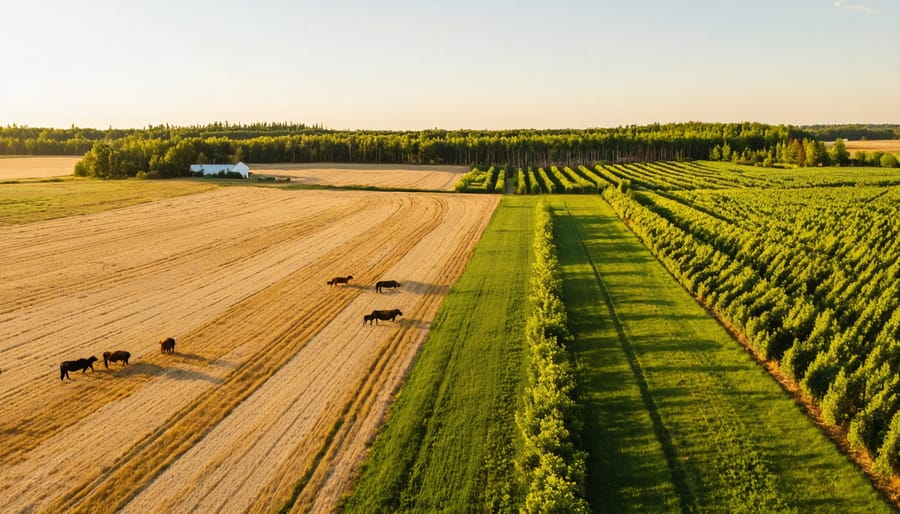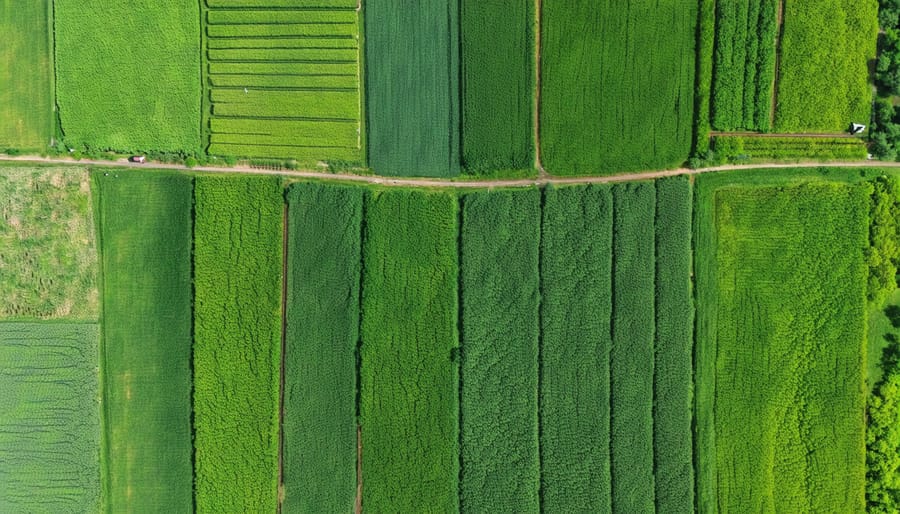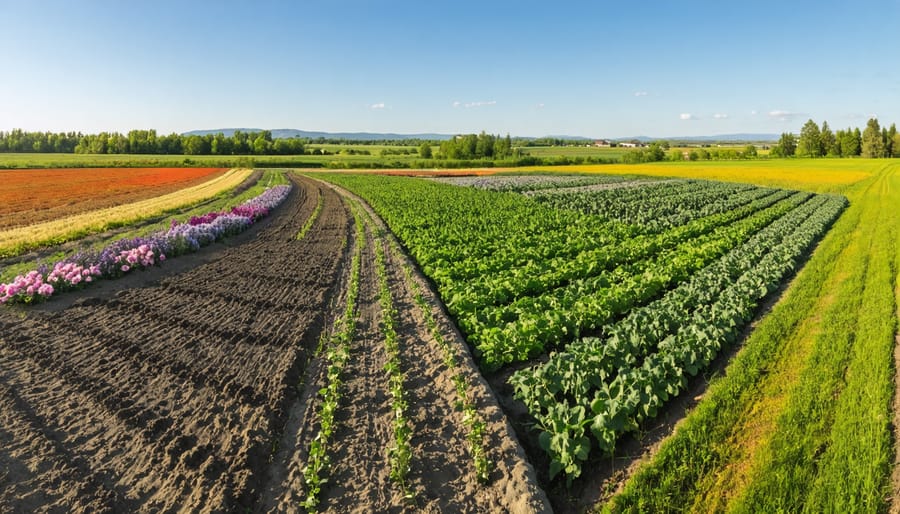Transform your farm into a regenerative powerhouse by integrating crop rotation, livestock management, and soil-building practices to achieve sustainable livelihoods through agroecology. Alberta farmers implementing these systems have reported 40% reduced input costs while maintaining or increasing yields within three growing seasons.
Plant diverse cover crop mixtures between September and early October, combining cereals, legumes, and brassicas to maximize soil protection and organic matter production during shoulder seasons. Canadian farms using this approach have documented 25% improvements in water retention and 30% reductions in fertilizer requirements.
Establish strategic partnerships with local livestock producers to create closed-loop nutrient cycling systems. Grazing cover crops and crop residues generates additional revenue streams while building soil health through managed animal impact. Pioneer farms in central Alberta have increased per-hectare profits by $200-300 annually through these arrangements.
Design field layouts and crop schedules around natural ecosystem patterns, incorporating wetland buffers, windbreaks, and pollinator corridors. This integrated approach not only supports biodiversity but also provides natural pest control and improved crop resilience, reducing pest management costs by up to 35% while creating new opportunities for specialty crop production and ecosystem service payments.
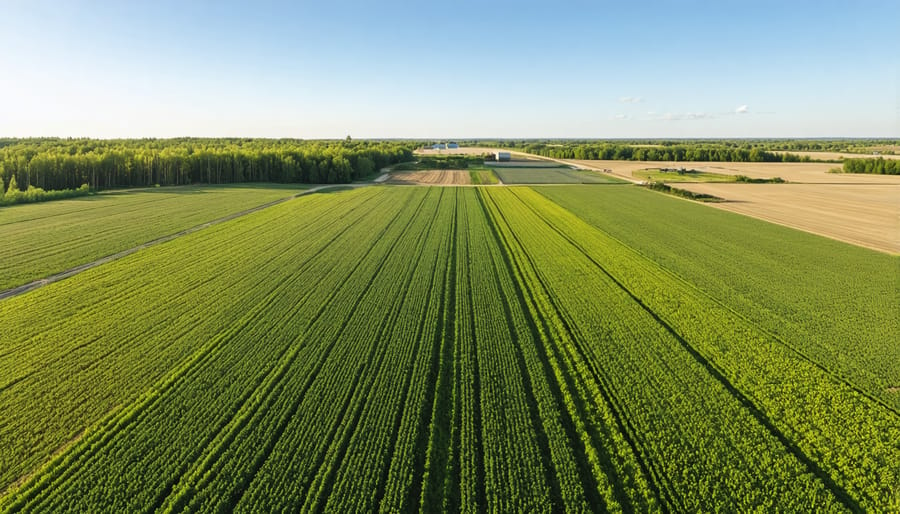
The Power of Integrated Agroecological Systems
Connecting Soil Health to Farm Prosperity
The connection between soil health and farm profitability is fundamental to sustainable agriculture in Alberta. Healthy soils act as the foundation of a prosperous farm operation, directly impacting crop yields, input costs, and long-term viability.
Alberta farmers who prioritize soil health through practices like cover cropping and reduced tillage report significant benefits to their bottom line. For instance, the Watson family farm in Lacombe County reduced their fertilizer costs by 30% after implementing soil-building practices over three years, while maintaining consistent yields.
Improved soil structure and organic matter content enhance water retention, reducing irrigation needs and providing resilience during drought conditions. This water efficiency translates to substantial cost savings, particularly in regions with variable rainfall patterns.
Healthy soils also support robust root systems and beneficial soil organisms, naturally suppressing pest and disease pressures. Many Alberta farmers report reduced pesticide use after transitioning to soil-health focused practices, leading to both environmental and economic advantages.
The investment in soil health typically shows returns within 2-5 growing seasons through reduced input costs, improved crop quality, and enhanced land value. Local soil testing services and agricultural extension programs offer support for farmers looking to assess and improve their soil management strategies while maintaining profitable operations.
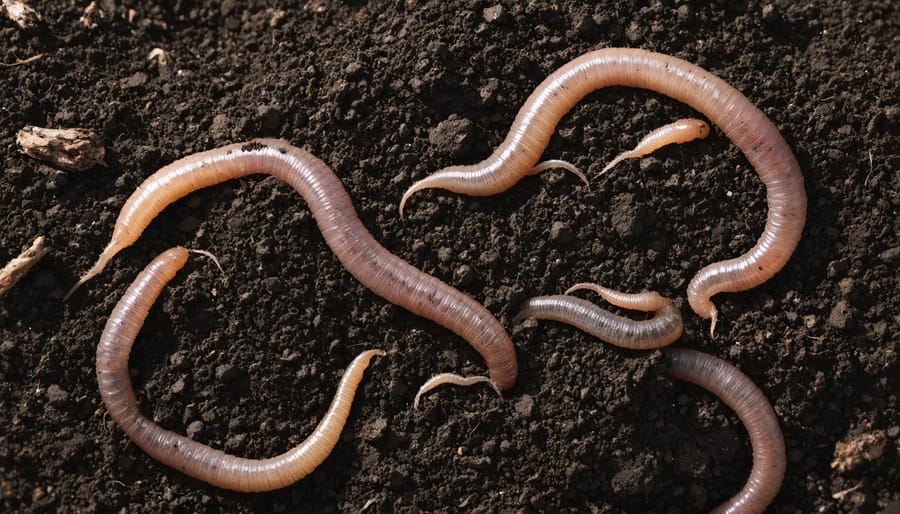
Creating Closed-Loop Systems
Creating closed-loop systems on your farm means transforming waste into valuable resources, ultimately reducing costs while benefiting the environment. Many Alberta farmers have successfully implemented circular farming systems that maximize resource efficiency and minimize waste.
Start by mapping your farm’s input and output flows. Common opportunities include composting crop residues to create natural fertilizers, using livestock manure for soil amendment, and capturing rainwater for irrigation. For example, the Miller family farm near Red Deer reduced their annual fertilizer costs by 40% by processing cattle manure through a biodigester, which also provides renewable energy for their greenhouse operations.
Consider establishing partnerships with nearby farms to share resources. The Southern Alberta Agricultural Co-op demonstrates how combining different operations can create synergistic relationships – grain farmers provide straw bedding to livestock operations, which return composted manure as fertilizer.
Key strategies for closing your farm’s loops include:
– Installing water catchment systems
– Creating on-site composting facilities
– Implementing crop rotation to maintain soil health
– Using cover crops to prevent nutrient loss
– Processing agricultural waste into value-added products
Remember that transitioning to a closed-loop system can be gradual. Start with one or two initiatives and expand as you develop expertise and see results. Many local agricultural extension offices offer support and resources for farmers looking to implement these practices.
Real Success Stories from Alberta’s Fields
The Thompson Family’s Transformation
Located just outside of Lethbridge, Alberta, the Thompson family farm has been operating since 1923, spanning four generations of agricultural expertise. In 2015, Sarah Thompson and her parents made the bold decision to transition their 640-hectare conventional grain operation into a sustainable organic integrated farm, marking the beginning of a remarkable transformation.
The family’s journey started with careful planning and a three-year organic transition period. They divided their land into smaller parcels, implementing crop rotation with legumes and cover crops to naturally enhance soil fertility. The Thompsons also integrated a small herd of grass-fed cattle, using rotational grazing to improve soil health and diversify their income streams.
“The first two years were challenging,” admits Sarah Thompson. “We had to completely rethink our approach to pest management and soil fertility, but the long-term benefits have far exceeded our expectations.” The family invested in soil testing and worked closely with local agricultural extension services to develop sustainable solutions tailored to their specific conditions.
By 2019, the Thompson farm had become a model of integrated agricultural practices. They established partnerships with local organic markets and restaurants, creating stable revenue channels for their diverse product range. Their implementation of water-efficient irrigation systems reduced water consumption by 40%, while their soil organic matter increased from 2% to 5.8%.
The economic results have been equally impressive. Despite initial investment costs, the farm’s net profit increased by 25% within four years of completing the organic transition. The diversified income streams have also provided greater financial stability throughout varying weather conditions and market fluctuations.
Today, the Thompsons host regular farm tours and workshops, sharing their experiences with other Alberta farmers interested in sustainable transitions. “We’re proof that traditional family farms can adapt and thrive while protecting our environment,” says Sarah. “It’s about finding the right balance and being patient with the process.”
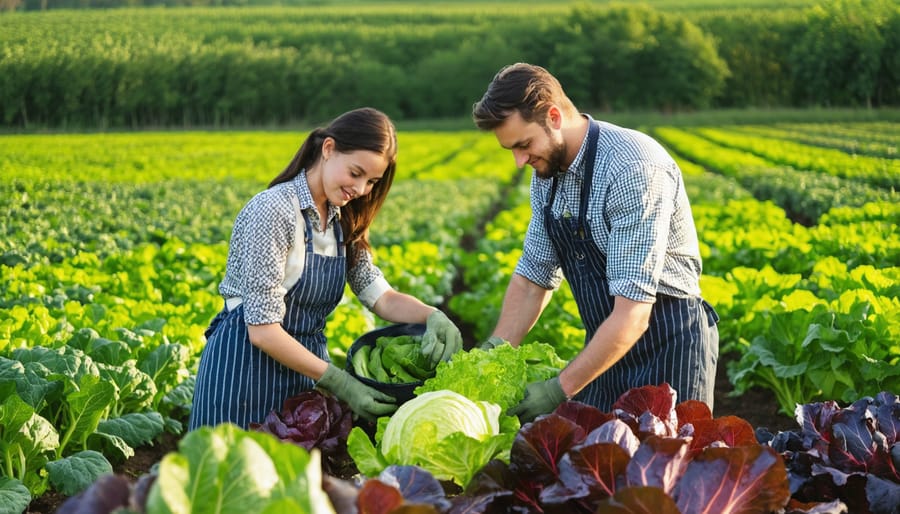
Community-Supported Agriculture Success
The Riverbend Organic Farm CSA program in Red Deer County, Alberta, stands as a shining example of how community-supported agriculture can transform local food systems while supporting sustainable farming practices. Since its inception in 2015, the program has grown from serving 25 families to supporting over 200 households across central Alberta.
Sarah and Mike Thompson, the farm’s owners, attribute their success to three key strategies: maintaining transparent communication with members, offering flexible share options, and implementing a robust crop planning system. They provide weekly newsletters detailing farm activities, upcoming harvests, and storage tips for seasonal produce, helping members feel connected to their food source.
The farm offers three share sizes – individual, family, and large family – with bi-weekly payment options to make organic produce more accessible to diverse income levels. Members can also choose between 16- and 24-week seasonal subscriptions, accommodating different lifestyle needs.
What sets Riverbend apart is their innovative approach to crop planning. Using climate-controlled greenhouses and season extension techniques, they provide fresh produce from May through October. Their careful succession planting ensures consistent weekly harvests of over 40 different vegetable varieties, meeting the diverse preferences of their membership base.
The program’s success has created ripple effects throughout the community. Local restaurants now source ingredients directly from the farm, and the Thompsons have launched educational workshops for aspiring CSA farmers. They’ve also partnered with local food banks, donating surplus produce and helping address food security concerns in the region.
The financial stability provided by the CSA model has allowed Riverbend to invest in soil health improvements and water conservation infrastructure. Member retention rates exceed 85%, demonstrating the program’s sustainability and community satisfaction. Their experience shows that when executed thoughtfully, CSA programs can create resilient local food systems while supporting ecological farming practices.
Practical Steps for Implementation
Assessment and Planning
Evaluating your farm’s current operations is crucial for developing a successful sustainable organic integrated livelihood system. Start by conducting a comprehensive soil analysis to understand your land’s potential and limitations. This should include testing for organic matter content, nutrient levels, and microbial activity across different areas of your property.
Create detailed maps of your farm’s resources, including water sources, existing infrastructure, and natural features. Document seasonal patterns specific to your region, particularly important in Alberta’s diverse climate zones. Keep thorough records of current yields, input costs, and market prices to establish your baseline performance metrics.
Consider using assessment tools like the Canadian Farm Sustainability Assessment, which helps identify areas for improvement in both environmental and economic aspects of your operation. Many Alberta agricultural extension offices offer free or low-cost evaluation services to help you get started.
Develop a monitoring system that tracks key indicators such as:
– Soil health and erosion rates
– Water usage and quality
– Biodiversity levels
– Energy consumption
– Labour requirements
– Financial performance
Remember to involve your team members and family in the assessment process. Their practical experience and observations can provide valuable insights that might not be apparent in formal evaluations. Consider joining local farmer networks to share experiences and learn from others who have successfully implemented sustainable practices.
Regular reassessment is essential – plan to review your progress quarterly and make detailed annual evaluations. This helps ensure your operation remains adaptable and resilient while moving toward your sustainability goals.
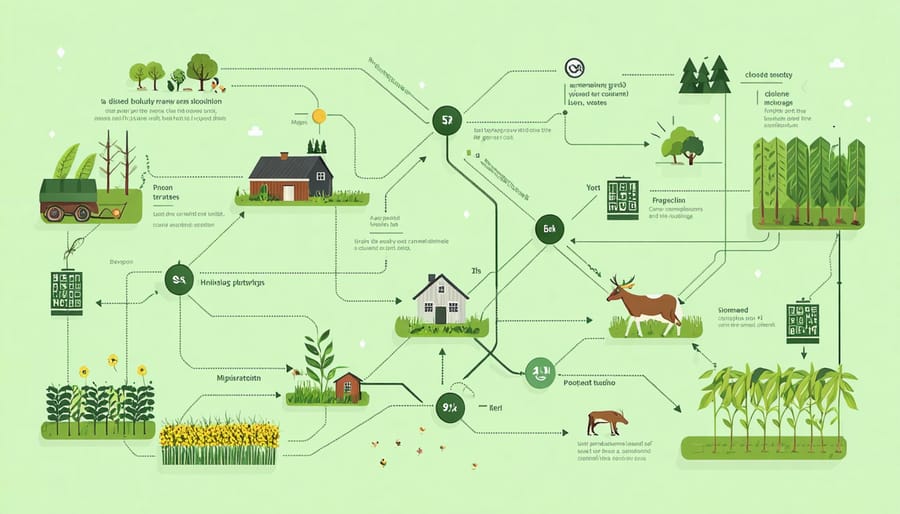
Resource Integration Strategies
Successful resource integration on organic farms requires thoughtful planning and strategic combinations of different farm elements. In Alberta’s diverse agricultural landscape, farmers have found particular success with companion planting systems that maximize both space and nutrient cycling. For example, integrating legumes like fava beans with cereal crops not only improves soil nitrogen content but also provides multiple harvest opportunities from the same field.
Water management plays a crucial role in resource integration. Many Alberta farmers have implemented innovative catchment systems that direct excess moisture from one area to support other farm activities. These systems often connect livestock watering stations with vegetable gardens or orchards, ensuring efficient water use across the property.
Livestock integration serves as a cornerstone of sustainable organic operations. Rotational grazing patterns can be designed to allow animals to naturally fertilize fields while controlling weed growth. Chickens following cattle in a planned rotation help break down manure while reducing pest populations, creating a mutually beneficial relationship that improves both soil health and animal welfare.
Waste stream management represents another vital integration point. Composting systems can effectively combine livestock manure, crop residues, and household organic waste to create nutrient-rich soil amendments. Many successful farms have established centralized composting areas that serve multiple farm sectors, reducing the need for external inputs while closing the nutrient loop.
Energy integration strategies often involve positioning wind breaks and shelter belts to serve multiple purposes. These tree lines protect crops and livestock while providing habitat for beneficial insects and birds, creating natural pest control systems that reduce the need for interventions.
Measuring Success
Measuring success in sustainable organic integrated livelihoods requires a comprehensive approach that combines environmental, economic, and social metrics. Successful Alberta farmers track key indicators including soil organic matter content, water retention rates, and biodiversity levels through seasonal soil testing and wildlife monitoring programs.
Financial metrics are equally important, with farmers monitoring crop yields, revenue per hectare, and operating costs. Many producers are discovering additional income streams through carbon credit opportunities and ecosystem services payments, which should be included in overall performance measurements.
Community impact indicators help gauge social sustainability, including local employment rates, knowledge-sharing initiatives, and partnerships with Indigenous communities. The Alberta Organic Producers Association recommends maintaining detailed records of:
– Annual soil health improvements
– Water usage efficiency
– Energy consumption reduction
– Local market participation rates
– Worker satisfaction and retention
– Implementation of innovative practices
Successful measurement also involves regular consultation with agricultural extension services and participation in regional farmer networks. This collaborative approach helps benchmark progress against similar operations while sharing best practices. Many Alberta farmers find that using digital tools and apps specifically designed for sustainable agriculture tracking helps streamline this process and provides valuable data for continuous improvement.
As we’ve explored throughout this article, sustainable organic integrated livelihoods represent a powerful pathway toward a more resilient and prosperous agricultural future for Alberta’s farming communities. The success stories we’ve shared demonstrate that by embracing holistic farming approaches, Canadian farmers can significantly improve both their environmental impact and bottom line.
The key takeaways for implementation include starting with soil health as your foundation, integrating diverse crop rotations, and establishing strong local market connections. Remember that transition doesn’t happen overnight – begin with small, manageable changes on a portion of your land while exploring emerging bioeconomy opportunities that align with your farm’s capabilities.
Your next steps should include:
– Conducting a baseline assessment of your current operations
– Identifying two or three sustainable practices that align with your farm’s context
– Connecting with local organic farming networks and mentors
– Developing a three-year transition plan with clear milestones
– Exploring available grants and support programs for sustainable agriculture
The path to sustainable organic integrated livelihoods is unique for every farm, but you’re not alone on this journey. Through collaboration with fellow farmers, agricultural extension services, and local research institutions, you can access the support needed to make this transition successful. As more Alberta farmers embrace these practices, we strengthen our agricultural communities while building a more sustainable future for generations to come.
Remember, every step toward sustainability, no matter how small, contributes to the larger goal of creating resilient, profitable farms that benefit both people and the planet.


